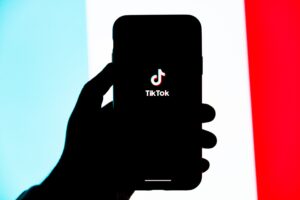How COVID-19 Changed Advertising Forever
The Coronavirus has changed the world in countless ways, and advertising is no exception. With lockdowns and social distancing measures in place, people were spending more time at home and online than ever before, this resulted in a shift towards digital channels for marketing and advertising. In this article, we will explore how COVID-19 has changed the advertising landscape forever.
The Shift Towards Digital Marketing
The pandemic only accelerated this shift towards digital marketing. During lockdown, users were unable to leave their homes and many advertising channels became virtually irrelevant overnight.  Digital advertising had been around for years and was already beginning to eat into the traditional advertising channels. The initial shock of the pandemic led to many agencies pausing campaigns and halting all insertion orders. For this reason Q1 in digital ad spend was light like every other platform, the only difference being that digital would make a full recovery. As marketers scrambled to reallocate budgets, many noticed the only space with inventory to meet budgets and meet or exceed the metrics they were used to was digital. This would breed competition within digital advertising. According to Tabitha Cassidy of Digital Commerce 360, CPC (cost per click) 55.3% in Q2 compared with Q1 worldwide. This trend has not slowed down and now many companies are unable to survive without a digital presence, so what aspects of digital marketing saw the biggest changes?
Digital advertising had been around for years and was already beginning to eat into the traditional advertising channels. The initial shock of the pandemic led to many agencies pausing campaigns and halting all insertion orders. For this reason Q1 in digital ad spend was light like every other platform, the only difference being that digital would make a full recovery. As marketers scrambled to reallocate budgets, many noticed the only space with inventory to meet budgets and meet or exceed the metrics they were used to was digital. This would breed competition within digital advertising. According to Tabitha Cassidy of Digital Commerce 360, CPC (cost per click) 55.3% in Q2 compared with Q1 worldwide. This trend has not slowed down and now many companies are unable to survive without a digital presence, so what aspects of digital marketing saw the biggest changes?
Social Media
Social media became a vital tool for businesses during the pandemic.  With people spending more time on social media, businesses had more inventory to reach their target audience. Social media ad spend increased by 23% in Q2 2020 compared to the previous year.
With people spending more time on social media, businesses had more inventory to reach their target audience. Social media ad spend increased by 23% in Q2 2020 compared to the previous year.
Social media platforms adapted to the changing landscape, with platforms like Facebook and Instagram introducing new features to help businesses reach their target audience. For example, Facebook introduced a new feature called “Shops,” which allows businesses to set up online stores on their Facebook and Instagram pages.

This made it easier for businesses to sell their products online and reach their target audience on a platform that they already were spending increased time on.
TikTok, a short form video app, would gain notoriety during the pandemic and see a surge in popularity. Being dubbed “the platform for the people” According to Adducent in March 2020, the average time a user spent using the app a day was 14 hours and 18 minutes in the USA.
E-commerce
The pandemic accelerated the trend towards e-commerce, with physical stores seeing an astronomical reduction in shoppers and many shutting down all together.  This trend was felt across the country and online shopping pulled ahead of brick and mortar stores. As a result, businesses have been focusing on their e-commerce strategies to reach their customers, causing e-commerce sales to have increased by 44% in Q2 2020 compared to the previous year According to Jessica Young of Digital Commerce 360.
This trend was felt across the country and online shopping pulled ahead of brick and mortar stores. As a result, businesses have been focusing on their e-commerce strategies to reach their customers, causing e-commerce sales to have increased by 44% in Q2 2020 compared to the previous year According to Jessica Young of Digital Commerce 360. Businesses have been using a variety of strategies to reach their customers online, including email marketing, social media advertising, display ads, and paid search advertising. These strategies have been effective in driving traffic to e-commerce websites and increasing sales. E-commere also allowed users to tie an ad back to a purchase allowing them to have data in real time on what worked. Allowing them to stop making assumptions as to what creatives and audiences work best and start making those conclusions on data.
Businesses have been using a variety of strategies to reach their customers online, including email marketing, social media advertising, display ads, and paid search advertising. These strategies have been effective in driving traffic to e-commerce websites and increasing sales. E-commere also allowed users to tie an ad back to a purchase allowing them to have data in real time on what worked. Allowing them to stop making assumptions as to what creatives and audiences work best and start making those conclusions on data.
Post Quarantine
The pandemic changed advertising forever, the shift towards digital marketing is likely to continue as a result of just how effective it has been. The pandemic essentially worked as one large case study into the effectiveness of digital media buying and businesses have taken note.
It is important to note that traditional advertising channels are far from dead. While digital marketing has been a huge success during the pandemic, traditional channels such as television, radio, and print are still effective in reaching certain audiences. One example of a traditional advertising channel that has adapted to the changing landscape is out-of-home advertising. With people spending more time outdoors, out-of-home advertising has become an effective way to reach consumers. Digital out-of-home advertising, which uses digital screens to display ads, has also become more popular during the pandemic.
Another trend that is likely to continue in the future is the use of data and analytics in advertising. With the rise of digital channels, businesses have access to more data than ever before. This data can be used to target ads more effectively and measure the effectiveness of advertising campaigns.
Conclusion
The COVID-19 pandemic undoubtedly changed advertising forever. Businesses have realized the importance of digital channels for reaching their target audience and are likely to continue investing in these channels. While traditional advertising channels are not dead, businesses will need to adapt to the changing landscape and invest in digital channels to reach their target audience. The pandemic also highlighted the importance of agility and adaptability in advertising. Businesses that were able to adapt quickly to the changing landscape were able to survive the pandemic and in some cases even become more profitable. As the world continues to change, businesses will need to remain agile and adapt quickly to new trends and technologies in advertising.
Digital Mouth prides itself on its ability to pivot in real time and make meaningful impacts on the company’s bottom line. Check out our case studies to learn more.

